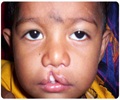Q: Which doctor should I meet if I have the symptoms of Klinefelter's syndrome?
A: You could meet an andrologist or an urologist for your problem. An adolescent will first consult the pediatrician who will then refer to appropriate specialists as required.
Q: Can a female have Klinefelter's syndrome?
A: Females cannot have it as they do not have a Y chromosome. It affects only males. Klinefelter’s syndrome results from a genetic abnormality in which males have an extra copy of X chromosome.
Q: What is the complete set of genetic information an organism carries in its DNA?
A: People generally have two sex chromosomes in each cell. Females have two X chromosomes and males have one X and one Y chromosome. Humans are born with 46 chromosomes in 23 pairs.
Q: Is there a cure or treatment for Klinefelter’s syndrome?
A: Klinefelter’s syndrome cannot be cured it can be treated with lifelong testosterone therapy to maintain general well-being. Physical, occupational and behavioral therapy can also be given.
Q: Can men with Klinefelter’s syndrome have babies?
A: In Klinefelter’s syndrome, 95% of the men are infertile because of azoospermia. However, donor insemination and assisted reproductive technologies can help them. For patients of Klinefelter’s syndrome who have a mosaic form (46 XY/47 XXY) the presence of sperm has been reported.
Q: Is XXY a male or female?
A: XXY is a male with an extra X chromosome.
Q: Is all male breast cancer genetic?
A: Men who inherit BRCA1 or BRCA2 genes have an increased risk of breast cancer. However, the majority of breast cancer occurs in men who have no family history of male breast cancer.
Q: If one child has Klinefelter’s syndrome, what are the risks of another child having it?
A: Klinefelter’s syndrome is not an inherited condition. The risk of Klinefelter's syndrome in another pregnancy is not above the general population risk.
Q: Is there any way to find out about this condition during pregnancy?
A: A procedure can be done early in pregnancy – approximately at 10 to 12 weeks to obtain a small sample of the placenta for testing and this is called chronic villus sampling. Another procedure called amniocentesis can be done at approximately 16 to 18 weeks of pregnancy and obtaining a sample of amniotic fluid surrounding the baby for testing. However, both procedures have a risk of miscarriage. These tests are normally done to diagnose another condition called Down syndrome.
Q: What can be done for gynecomastia?
A: If this is cosmetically not acceptable – a surgery is advocated to remove the excess fat.














